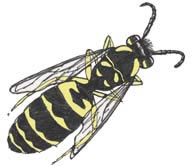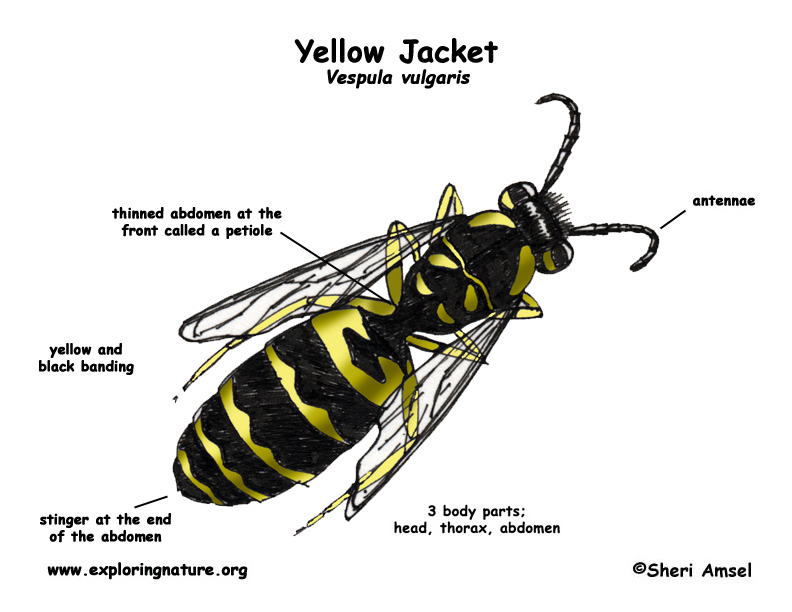

They are found all over North America.
They nest near orchards, fields and on the edge of forests. Their nests are often under the eaves of buildings, in a rock wall or rock pile or underground near a fruit tree or garden.
They are less than an inch long with a smooth black and yellow-banded body. They have dark antennae and 2 pairs of wings.
They sting badly when bothered. They can sting over and over. They will attack beehives for their honey.
They eat other insects, plant nectar, fruit, and food left out by humans.
The female mates in late summer and then hibernates for the winter. The rest of the colony dies out. Then in the spring, she builds a nest on a building, in a rock wall or underground and lays her eggs.
Kingdom: Animalia
Phylum: Arthropoda
Class: Insecta
Order: Hymenoptera
Suborder: Apocrita
Family: Vespidae
Genus: Vespula
Species: V. vulgaris
When you research information you must cite the reference. Citing for websites is different from citing from books, magazines and periodicals. The style of citing shown here is from the MLA Style Citations (Modern Language Association).
When citing a WEBSITE the general format is as follows.
Author Last Name, First Name(s). "Title: Subtitle of Part of Web Page, if appropriate." Title: Subtitle: Section of Page if appropriate. Sponsoring/Publishing Agency, If Given. Additional significant descriptive information. Date of Electronic Publication or other Date, such as Last Updated. Day Month Year of access < URL >.
Amsel, Sheri. "Yellow Jacket" Exploring Nature Educational Resource ©2005-2024. December 13, 2024
< http://www.exploringnature.org/db/view/Yellow-Jacket >

